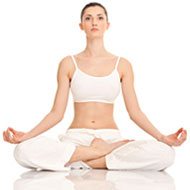Dirga Pranayama: Learning How to Breathe
Throughout your Yoga classes of, breathing techniques might or might not be a vital part of the process. The sort of breathing you will encounter will differ, depending on the types of Yoga you practise. In this article, we endeavor to explore the breathing techniques associated with Dirga Pranayama.
This is also referred to as the complete breath. When embarking upon the world of Yoga, you will find that Dirga Pranayama offers a method which involves three different parts of the body. For this reason, this technique is time and again referred to as the three-part breath (and sometimes even as complete breath).
For people seeking an approach which furthers calmness and relaxation of mind, this is the most popular method of breathing to look for.
The appeal of this breathing technique lies in the fact it that uses 3 parts of the body. You learn to participate in three different positions, through active breathing. The first position that deals with the lower abdomen, is situated on top of or a slightly below the belly button. In the second position you engage the lower part of your chest that is distinguished as the lower half of your rib cage. The third position involves the use of the upper part of your chest, which uses the part of the body situated just on top of the top of your sternum.
With regard to the breathing technique, you are supposed to take constant breaths that are inhaled and exhaled only through the nostrils. Inhalation starts with the first position (lower abdomen) and then moves to the second spot (sternum or lower chest), and then flows to the third point (upper chest). This is where the exhalation starts. Then exhalation moves on to the sternum and finally terminates in the abdomen.
Your hands should be in a resting position, as you move from position to position in breathing. This will deepen your breathing and also facilitate feeling your breath as it rises and falls in the different parts. As you begin progress with the practice, at a regular pace, you will learn to use your hands to separate each movement that is linked to a spot if you wish so.
A lot of practitioners become more attuned with their yoga practices through this part of the technique. As you become more and more accustomed to the Yoga poses and breathing techniques, you will be able to practise without using your hands. This is most advocated when the flow of breath in and out of your body is no longer tough to harness.
As you start to become more and more comfortable with the technique, you achieve more and more relaxation through Pranayama. Slowly you will be able to accomplish the three part breathing more gently and effortlessly. The best part of this breathing technique is that as you breathe, you will start to feel a wave of the up and down movements throughout your torso.
Read more articles from the Yoga Breathing (Pranayama) Category.

 Find Pose
Find Pose

